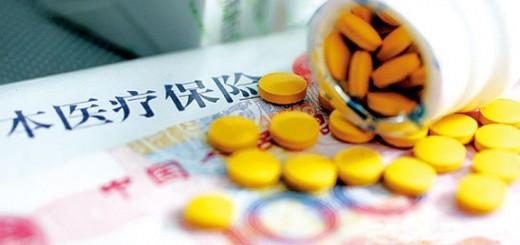Downloads
Pharmacological Review of Ginsenoside Dammarane Saponin Rh2
Downloads
Pharmacological Review of Ginsenoside Dammarane Saponin Rg1
Downloads
Pharmacological Review of Ginsenoside Dammarane Saponin Rb1
Downloads
Pharmacological Review of Aglycon Dammarane Sapogenin (AGS) – Protopanaxatriol (PPT)
Downloads
Pharmacological Review of Aglycon Dammarane Sapogenin (AGS) – Protopanaxadiol (PPD)
|
|
Recent advances in ginseng as cancer therapeutics: a functional and mechanistic overview
 |
Antiallergic activity of ginsenoside Rh2
The antiallergic activities of ginsenosides, which were isolated from acid-treated ginseng (Panax ginseng, Araliaceae), and their metabolites by human intestinal bacteria were measured.
Ginsenoside Rh2, which is a main metabolite, had the most poten... |
The first issue of Natural Product Reports in 2015 will publish a comprehensive review regarding ginseng’s anti-cancer effects and underlying mechanisms.
Here we summarize this review as follows:
- Ginsenosides belong to dammarane saponins, and can be grouped into two major categories: protopanaxadiol group (PPD) (e.g., Rb1, Rb2, Rc, Rd, Rg3, Rh2) and protopanaxatriol group (PPT) (e.g., Re, Rf, Rg1, Rh1), which can be metabolized into dammarane sapogenins PPD and PPT, respectively. In general, the panaxadiol group ginsenosides have strong anti-cancer activities while the panaxatriol ones have little, if any, anti-cancer activities.
- Ginseng total saponins could markedly reduce the production of pro-inflammatory cytokines such as tumor necrosis factor-α, interleukin (IL)-1β, IL-6, inducible nitric oxide synthase (iNOS) and cyclooxygenase-2 (COX-2) so as to reduce genetic and epigenetic damage which are related to cancer development.
- Cellular reactive oxygen species (ROS) levels play an important role in human carcinogenesis. Ginsenosides have a strong anti-oxidative effects, and the ROS scavenging activities of ginsenosides were ranked in the descending order: Rc > Rb2 > Rg2 > Rh2 > Rh1 > Rf > Rg3 > Rg1 > Rb1 > Re > Rd.
- Ginsenosides can regulate core cell cycle regulatory machinery, including cyclin-dependent kinases (CDKs) and cyclins involved in G0/G1 progression, to arrest cancer cell division.
- Ginsenosides inhibit telomerase and induce apoptosis of cancer cells.
- Ginsenosides can induce cancer cell differentiation towards normal direction.
- PPD-type dammarane saponins and sapogenins are anti-angiogenic and can reduce blood vessel density in the tumor to slow down its growth.
- Ginsenosides have an inhibitory effect on several proteases as to protect the integrity of vascular basement membrane and prevent cancer cell migration and invasion which are crucial for the dissemination of cancer cells from an original site to other organs.
- Ginsenosides utilize steroid receptor-dependent and -independent pathways to exert their anti-cancer activities.
- Ginsenosides mediate their cellular activities via both genomic and non-genomic pathways.
- Ginsenosides can alter the expression of miRNAs to control angiogenesis, apoptosis, chromatin modification, cell proliferation, and differentiation in cancer cells.
- Ginsenosides and ginseng extracts showed no observable toxicity in organs.
- Ginseng products result in a significant reduction in cancer-related fatigue.
- Ginsenosides have synergistic effects with various chemo drugs and are able to enhance the therapeutic effects of conventional chemotherapy as well as protect normal tissues from chemotherapy-induced damage.
Recent advances in ginseng as cancer therapeutics: a functional and mechanistic overview.
Nat Prod Rep. 2014 Oct 27;
Authors: Wong AS, Che CM, Leung KW
Abstract
Cancer is one of the leading causes of death worldwide. Ginseng, a key ingredient in traditional Chinese medicine, shows great promise as a new treatment option. As listed by the U.S. National Institutes of Health as a complementary and alternative medicine, its anti-cancer functions are being increasingly recognized. This review covers the mechanisms of action of ginsenosides and their metabolites, which can modulate signaling pathways associated with inflammation, oxidative stress, angiogenesis, metastasis, and stem/progenitor-like properties of cancer cells. The emerging use of structurally modified ginsenosides and recent clinical studies on the use of ginseng either alone or in combination with other herbs or Western medicines which are exploited as novel therapeutic strategies will also be explored.PMID: 25347695 [PubMed - as supplied by publisher]
Source: Ginsenosides
|








